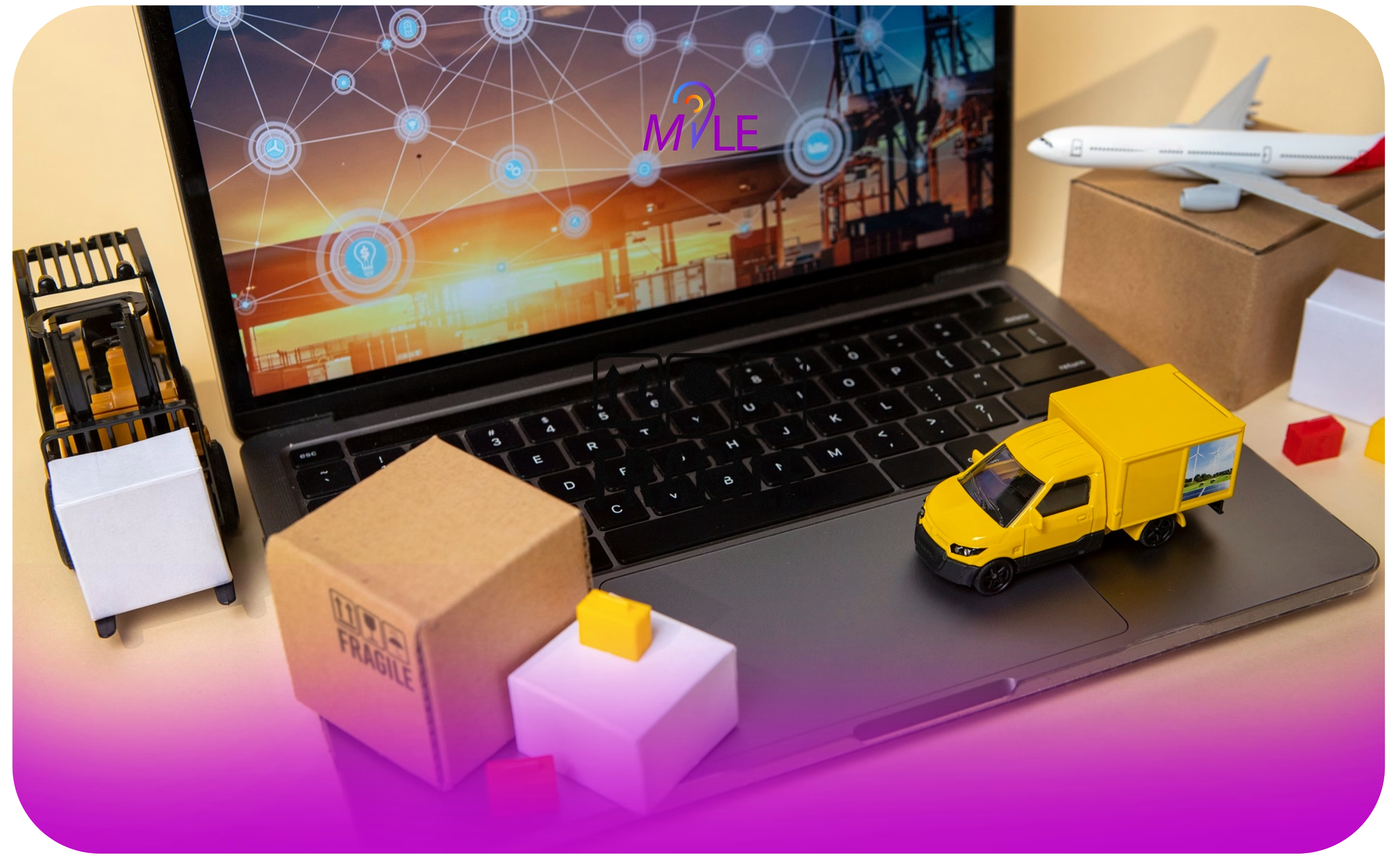5 Ways an eCommerce Delivery Software Helps Online Businesses
Missed deadlines, lost packages, and unhappy customers can hurt your business.
So, how do you keep up with rising orders and not lose your cool?
An eCommerce delivery management platform helps you stay organized, automate key tasks, and keep customers in the loop.
With a system like this, you can assign drivers, track deliveries in real time, and send automatic updates. No more juggling spreadsheets and calls! Now you have a structured way to manage deliveries.
This guide breaks down seven major benefits of using an eCommerce delivery management platform. You’ll see how it helps speed up deliveries, reduce wasted time, and lower fuel costs. It also makes managing drivers easier, keeps them happy, and helps businesses grow with peace of mind.
1. Speed Up Your Deliveries
Customers expect quick deliveries, and a slow process can lead to frustration. Fast deliveries keep customers happy and sets your business apart from your competitors. If orders take too long to arrive, shoppers may look elsewhere next time.
An eCommerce delivery management platform speeds up the process by using AI-powered order automation, smart zone configurations, dynamic last mile delivery route optimization, and real-time monitoring.
AI-driven dispatching assigns orders instantly based on factors like distance, driver availability, vehicle capacity, and optimized routes. The system distributes workloads evenly, so drivers complete more deliveries in less time.
Configurable delivery zones also help organize fleets more efficiently. The system tracks inside and outside zones, and assigns deliveries based on real-time conditions. This keeps drivers on the best routes and avoids unnecessary detours. Faster assignments and optimized routes allow businesses to move orders from pickup to drop-off as per schedule.
Unexpected events like vehicle breakdowns or last-minute order changes can slow down deliveries. Real-order tracking gives dispatchers and logistics teams eyes on the field and allows them to adjust assignments quickly, so that the drivers can complete deliveries on time and in full.
2. Grow Your Business at Scale
A growing order volume often leads to late deliveries, undelivered packages, and angry customers. A delivery management platform helps businesses grow smoothly by using real-time data, AI-driven recommendations, and smart driver assignments.
Expanding to new areas also gets easier when you have a reliable system in place. When routes are optimized for efficiency, you’ll find that managing deliveries across multiple cities or regions is much less stressful.
Real-time eCommerce delivery analytics ensure drivers are assigned to zones based on demand. Interactive heat maps show administrators where orders are concentrated, helping them send drivers to the right locations. This improves delivery speed, optimizes resources, and prevents delays.
Detailed insights highlight busy branches, warehouses, stores, and kitchens. When certain locations experience high demand, administrators can allocate extra drivers or vehicles to manage the workload.
AI-powered recommendations also help managers make quick, informed decisions. Branch administrators, kitchen managers, and warehouse supervisors can monitor deliveries, adjust driver assignments, and override system settings when needed.
Automated resource allocation, data-driven insights, and AI recommendations help businesses handle increasing demand with no disruptions at all. As operations expand, deliveries remain smooth, customers stay satisfied, and growth becomes more manageable.
3. Keep Your Drivers Happy
We all want to keep our customers happy, but it’s just as important to ensure that our delivery personnel are satisfied. After all, they are the ones in the field making sure orders reach customers on time. Overworked drivers means late deliveries and customer dissatisfaction. Good delivery management systems help you avoid all of that.
First things first, a hassle-free onboarding process accelerates the formalities. Drivers can log on to the driver management app to upload documents, create profiles, and go through an automated approval process. When you have less paperwork to take care of, you can get the new hires on the road sooner.
Furthermore, a proper shift setup allows you to assign zones and workdays in a way that balances workloads. Clear schedules reduce last-minute changes and help drivers stay on top of their jobs throughout the day.
Accurate earnings and commission tracking also play a big role in driver satisfaction. Manual calculations often lead to errors and payment delays, but an automated system calculates each driver’s earnings correctly and disburses them on time.
Drivers can also check their income through their app. This gives them complete transparency and resolves any payment-related concerns as soon as they arise. When drivers are satisfied, they perform better, which translates into faster deliveries, fewer errors, and happier customers.
4. Spend Less on Last-Mile Delivery
Last-mile delivery makes up 53% of shipping costs, and inflation is driving prices even higher. The growth of eCommerce created a need for third-party logistics (3PLs), and they have fulfilled that need by covering delivery gaps. However, they have also made shipping more complicated for businesses. On top of that, fuel prices keep changing, and wages are rising, so delivery costs increase even more.
An eCommerce delivery management platform optimizes every part of the journey and helps businesses spend less on transportation. Smart route planning finds the shortest and quickest paths, cutting down on unnecessary mileage. When drivers follow better routes, they reach customers faster and save on fuel at the same time. When accumulated over time, these small improvements add up to massive savings.
Driver habits also play a big role in fuel consumption. Harsh braking, excessive idling, and sudden acceleration all waste fuel and increase wear and tear on vehicles. A delivery management software tracks driver behavior and identifies costly driving patterns.
Failed deliveries are another unnecessary expense. “Driver arrived but nobody received the order” means another trip, which in turn increases fuel costs and labor time.
An eCommerce delivery software has electronic proof of delivery that logs that a driver arrived on time and completed the delivery with recorded details such as photos, timestamps, and customer signatures. Not only does this help resolve customer disputes, it also results in fewer failed deliveries, and that means fewer extra trips and less wasted fuel.
5. Optimize Deliveries with Third-Party Integrations
A delivery business depends on multiple systems to keep operations running smoothly. An eCommerce delivery management platform connects with several third-party software applications to automate routine tasks, improve accuracy, and reduce manual work.
A third-party logistics (3PL) carrier integration links the platform with multiple 3PLs. Web services and API integrations allow businesses to retrieve live carrier rates, choose the best carrier based on cost, delivery speed, and capacity, and book deliveries instantly. Order statuses too, update in real time, so that businesses have full visibility into deliveries and can make quick adjustments when delivery conditions change.
أ warehouse management integration syncs order details between warehouses, carriers, and back office. The platform automatically transfers packing lists, shipping labels, and tracking data. Also, whenever an item is picked from a shelf, its inventory is updated instantly, so there’s no need for manual input.
An electronic data interchange integration replaces cumbersome paperwork with digital document exchange. You can send and receive purchase orders, invoices, and delivery notes in a matter of a few clicks. This automation reduces human errors and speeds up communication with carriers.
خاتمة
Keeping up with deliveries gets harder as your business grows. An eCommerce delivery management platform helps you stay organized, speed up deliveries, and manage drivers without constant follow-ups. In doing so, it saves time, reduces costs, and keeps customers happy with your services. Instead of dealing with late orders and missed deliveries, you can focus on expanding your reach and increasing sales.
If you’re ready to streamline your deliveries, schedule a demo with Mile’s eCommerce delivery management solution and see how it can help your business grow.

